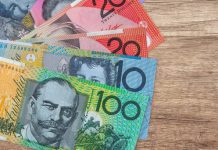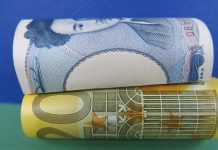It was all about Draghi and the Euro overnight, after he hinted that stimulus may be tweaked to compensate for improvements to the economy.
The current asset buying program runs until the end of the year, so traders now think the ECB’s September may include an announcement to taper. Their joy and relief at this prospect can be clearly seen by the dust left behind traders bid the Euro aggressively higher.
EURUSD is now within striking distance of 113 and the US Dollar Index is considering a run for 96, which is where the low of Trump’s election speech awaits. It probably didn’t help that Fed Chair Yellen announced she didn’t expect another financial crisis to occur in ‘our lifetimes’, as the Fed unfortunately do have a knack of releasing glowing comments about stability before major downturns. This may not turn out to be the case, but the comment certainly didn’t reassure Dollar bulls overnight.
Read the full speech by Mario Draghi
- A key issue facing policymakers is ensuring that nascent growth becomes sustainable.
- Dynamic investment that drives stronger productivity growth is crucial for that
- We can be confident that our policy is working and its full effects on inflation will gradually materialise.
- Our policy needs to be persistent,
- We need to be prudent in how we adjust its parameters to improving economic conditions.
- For the monetary transmission process to work, however, stronger growth and employment ought to translate into upward pressure on wages and prices.
- We can be reasonably confident that the forces we see weighing on inflation are temporary
- Our monetary policy measures have been successful in avoiding a deflationary spiral
- Prolonged period of low inflation is always likely to be exacerbated by backward-lookingness in wage and price formation
- As the economy continues to recover, a constant policy stance will become more accommodative
- The central bank can accompany the recovery by adjusting the parameters of its policy instruments to keep it broadly unchanged.
- Deflationary forces have been replaced by reflationary ones.
- For us to be assured about the return of inflation to our objective, we need persistence in our monetary policy.
- As the economy picks up we will need to be gradual when adjusting our policy parameters

The response from Euro bulls was widespread, which pushed EURUSD above 113 and to its highest levels since August 2016 and EURJPY to its highest level since April 2016. An interesting stat which we saw last December, was the closing direction of January had correctly predicted the direction of the year of 19 out of 20 years. As January closed in the green, it does indeed appear this stat is playing out nicely and that Euro is more likely to be trading higher by the 2017 compared with its open. Yet from here we need to decipher just how much upside is left for the Euro.
The monthly pivot marks a prominent swing low and a bullish channel has had its trajectory revised higher, making EUR an ideal candidate to buy any pullbacks on lower timeframes.

After many years of investors fearing the end of the Euro, the mindset remains for a majority that Euro could be trading lower. Yet when we consider all the battles it has endured without breaking below or even testing parity, this leaves EUR vulnerable to upside from here if data continues to support tightening. The fact that it rallies so hard when only a minor clue is given over the mere potential of a small tightening, also underscores this point that Euro could still be undervalued.
Traders reverted to net long in recent weeks, although the index has reached a level which was last associated with a bearish turnaround. Yet we also note that EURUSD trades at a significant discount to the last time traders were this net long. Furthermore, traders are not really that net long at all, especially when we assess the long and steady advance of gross long positions which have been taken since H1 2015. Therefor we suspect that in all the time Trump fails to implement inflationary policies and European data continues to outperform the US, the path of least resistance is more likely to be higher for the Euro from here.














